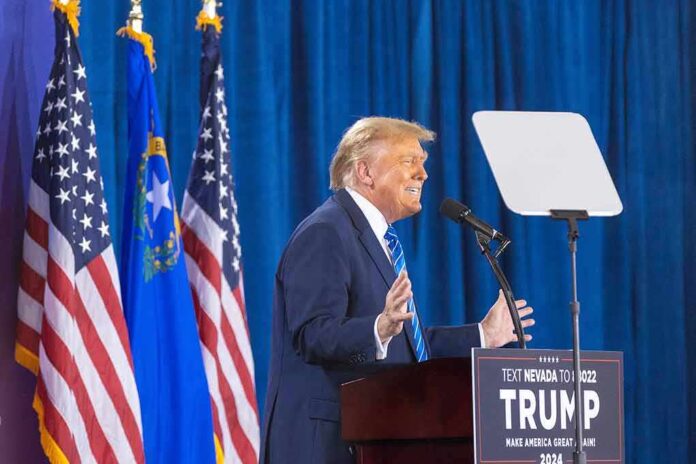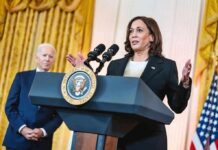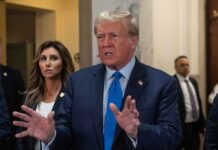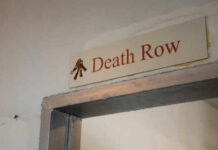President Trump demands immediate action to expose those behind the intelligence leak on Iran strikes, promising to compel journalists to reveal their sources in a high-stakes battle over national security and media accountability.
Key Takeaways
- Trump vows to pressure journalists to reveal sources behind leaked “low confidence” Defense Intelligence Agency report that contradicted his statements on the success of strikes against Iran’s nuclear facilities.
- The President insists the military operation “obliterated” Iran’s nuclear program, while the leaked DIA assessment claimed the strikes only delayed Iran’s capabilities by months.
- Trump specifically accused Democrats of leaking classified information to undermine his administration’s foreign policy achievements and called for their prosecution.
- The White House has dismissed media coverage of the leaked report as “fake news,” while Defense Secretary Pete Hegseth and Joint Chiefs Chair Gen. Dan Caine have labeled the assessment as “low confidence.”
- Trump has threatened legal action against CNN and The New York Times for their reporting on the intelligence leak.
Trump Demands Source Identification in National Security Clash
President Trump has launched a forceful campaign to identify and prosecute those responsible for leaking a classified Defense Intelligence Agency report that contradicted his administration’s assessment of recent military strikes on Iran’s nuclear facilities. The leaked intelligence document, which Trump claims was deliberately released by Democrats to undermine his presidency, suggested the strikes only delayed Iran’s nuclear program by months rather than delivering the devastating blow Trump has repeatedly described. In what represents a direct challenge to journalistic protections, Trump has indicated his administration will pressure reporters to reveal their sources.
“They could find out easily. And you go up and tell the reporter, ‘National security, who gave it.’ You have to do that. And, I suspect will be doing things like that,” Trump told Fox News’ “Sunday Morning Futures” in a pre-taped interview. New York Post
Disputing the “Low Confidence” Assessment
The President has vehemently rejected the leaked DIA assessment, describing the document as unreliable and premature. The report, which CNN was first to publish followed by The New York Times and other outlets, contradicted Trump’s public statements that American strikes had “obliterated” Iran’s nuclear capabilities. Defense Secretary Pete Hegseth and Joint Chiefs Chairman Gen. Dan Caine has supported the President’s position by characterizing the leaked assessment as having “low confidence,” a classification indicating significant uncertainty about the intelligence findings.
“low confidence,” said Defense Secretary Pete Hegseth and Joint Chiefs of Staff Chair Gen. Dan Caine Axios
Israel’s initial assessment has provided additional support for Trump’s position, indicating “very significant damage” from the U.S. airstrikes and suggesting it is premature to reach the conclusions presented in the leaked DIA report. This international validation has bolstered the administration’s narrative while raising further questions about the timing and motivation behind the leak. The Pentagon and FBI have reportedly launched investigations into how the classified information reached journalists, underscoring the serious national security implications.
Democrats Targeted as Alleged Leakers
President Trump has explicitly accused Democratic lawmakers of orchestrating the leak, framing it as a deliberate attempt to sabotage his administration’s foreign policy achievements. This accusation represents a significant escalation in the already tense partisan atmosphere surrounding national security matters. Trump has called for those responsible to face serious legal consequences, arguing that the unauthorized disclosure of classified information constitutes a grave breach of national security protocols.
“The Democrats are the ones who leaked the information on the PERFECT FLIGHT to the Nuclear Sites in Iran. They should be prosecuted!,” said Donald Trump The Guardian
The White House has firmly backed the President’s position, dismissing media coverage of the leaked assessment as “fake news” designed to undermine Trump’s success. This characterization aligns with the administration’s broader strategy of challenging mainstream media narratives while emphasizing the President’s decisive leadership on matters of national security. Trump’s legal team has already taken steps toward potential litigation, with a letter to The New York Times demanding a retraction and apology for what they describe as false and defamatory reporting.
Constitutional Tensions Over Press Freedoms
Trump’s suggestion that federal investigators should pressure journalists to reveal their sources has ignited a debate about the boundaries between national security imperatives and constitutional protections for the press. While the First Amendment generally shields journalists from being compelled to disclose confidential sources, there are limitations to these protections, particularly in cases involving classified information and national security. Legal experts note that this situation creates a constitutional tension that could potentially lead to significant court battles.
“They did obliterate it, it turned out,” Trump complained. “We had to suffer the fake news with the fake news of CNN and the New York Times, which were saying, well, maybe it wasn’t as good as Trump said. Maybe it wasn’t totally obliterated,” said Trump New York Post
The administration’s consideration of legal action against news organizations represents an aggressive stance toward media outlets that Trump has repeatedly criticized. By framing the issue as one of national security rather than press freedom, the President is positioning his administration to potentially test the limits of journalistic privilege. This approach aligns with Trump’s long-standing critique of what he considers biased media coverage and sets the stage for a potential landmark case on the balance between government secrecy and public disclosure.











